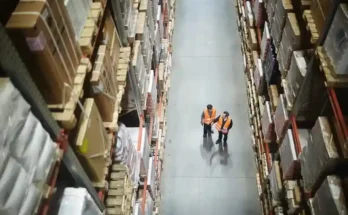To begin, it’s essential to understand what drywall materials you need. Drywall materials can be difficult to assess without knowing what type of drywall you need. If you don’t understand what your drywall materials are, you may not know how to estimate the costs of these materials accurately.
In this article, we’ll explore our guide on how to estimate drywall.
Costs of Drywall
A contractor’s fee typically accounts for 60-70% of the cost of a drywall finishing project. The remaining 30-40% is the cost of the drywall and the additional materials required to complete the job. Alternatively, you can perform the work yourself if you know how to handle drywall and don’t need a high-end finish. All materials are available at your local big box home improvement store. You may need to rent a dumpster to facilitate the work, adding another $0.10 to $0.75 per square foot.
Materials are the most significant component of the overall project and cost anywhere from fifteen to fifty per cent of the total cost. The average cost of a sheet of drywall is about $0.40 per square foot, which is less than half of the cost of hiring a professional drywall installer. Drywall panels are typically four feet by eight feet in size and are about one inch thick, but you can purchase specialty drywall such as mildew-resistant drywall that will cost more per square foot.
The cost of level 2 and level 3 finishes can vary greatly. For interior rooms, you may want to go with a level two or three finish, considered an intermediate-level finish. A level two finish is considered the best option for a smooth painted surface, and level three is ideal for light textures and wall coverings. These two levels will cost around $1.00 to $2.50 per square foot, depending on how much work you’re willing to put into the project.
Drywall is an inexpensive, durable material that covers bare walls and ceilings. It’s easy to work with, fire-resistant, and reasonably priced. However, unfinished drywall can look drab and dull. To avoid this, you should have it finished adequately before you paint it. It is the base layer that most walls are made of. However, hiring a professional drywall estimating services in usa is essential to avoid a general contractor markup.
Cost of Drywall Installation
There are a few factors that determine the cost of drywall installation. You need to know that this cost will vary by company and contractor, so you need to understand how these different materials affect the price. Knowing what types of drywall to get is also important. Below are five types of drywall and their associated costs. Read on to find out more. Listed below are the most common types of drywall.
If you have to renovate an old house, you should consider hiring a professional drywall installation team. While this may be more expensive up front, it will save you money in the long run. The improperly installed drywall can result in a messy appearance and even cause structural issues. You also don’t want to spend too much on drywall installation, especially if you’re not an expert. Professionals are trained and insured and will be able to give you accurate quotes.
The cost of sheetrock, or standard drywall, will vary depending on its thickness. For example, if the drywall is an only one-third inch thick, the cost will be between $0.24 and $0.41 per square foot. If you have a home with 3/8-inch-thick drywall, the cost of drywall installation will be around $1.27 to $1.97 per square foot. This figure includes the material prices and the cost of hanging and finishing the drywall.
The cost of drywall installation varies considerably based on the type of drywall and the amount of needed material. The cost will also depend on the size of the space. The larger the room, the higher the labour and material costs. You should also consider the type of drywall you choose, as thicker panels will be more expensive. You can choose the type of drywall that suits your needs, but it’s worth considering your budget.
A level four finish is the most common drywall finish. When calling for estimates, make sure you know what you want. Level four drywall covers all hardware with joint compound and has a smooth surface. It also provides a base for painting. A level four finish is best for you if you want to paint your drywall. If you don’t like the idea of painting your wall, you can hire a handyperson or professional to do the job.
Cost of Drywall Finishing
The cost of drywall finishing varies depending on the desired finish. Most professionals apply to level 4 finishes, which are the most common. If you’re performing a home renovation, you may be satisfied with level 4. You can always ask for a different finish if you have specific requirements. If you want an even smoother finish, consider level 5 and pay approximately $2.70 per square foot. Level 5 drywall finishes leave some of the earlier joint compound coatings behind and add an extra layer called a skim coat to smooth out the drywall surface.
The most expensive drywall finish is the purple board. A single panel costs an average of $55, while a level 5 finish will set you back $2.70 per square foot. This is a good option for small rooms that don’t have too many fittings and don’t have any moisture issues. However, the price per panel can vary greatly, depending on the panel type and thickness of the drywall. Typically, drywall finishing is more expensive if you need specialized cuts, which can add to the cost.
The cost of drywall finishing varies wildly, depending on the project’s size, whether residential or commercial. Commercial drywall finishing can run upwards of $300 per square foot. Using scaffolds for a 20-foot wall can add as much as 30% to the overall cost. Framing materials can cost between 4.5 cents per square foot. Furthermore, commercial buildings usually require a specific type of drywall, such as heat/fire resistant or soundproof.
To get an accurate cost estimate, a drywall contractor must determine how much material they need. They can use square footage rates for smaller jobs, but you cannot use the square footage rates for large ones. A contractor must also estimate the days it will take them to complete the project. This estimate is subjective and may vary depending on the job’s complexity. It is also essential to factor in the labour hours involved.
Cost of Drywall Primer
Do you need to repaint your bare walls? Rolling paint on a primed wall will be easier than with bare walls. In addition to being less expensive than a gallon of good paint, drywall primer hides drywall mud and joints. Primer is also more durable than most paints and can withstand high humidity and various temperatures. Here are some tips for selecting the suitable primer for your project.
Paint and primer-in-one (PVA) cost anywhere from $25 to $50 per gallon. The difference in cost is quite substantial, considering that you only need two coats of paint to cover 3,000 square feet of drywall. However, if you choose a paint that costs $30 to $50 per gallon, you’ll only need three or four coats, which could add up to $1,050 or $1,400. However, drywall primer will save you as much as $250 to $600 per coat.
Do not skip a layer of drywall primer before applying paint. Drywall primers are essential for achieving a smooth, even surface. Without primer, bare drywall would soak up the paint and leave a rough finish. A coat of primer will help seal these areas. Besides helping your drywall accept paint, it will also help to save on topcoats. Once the drywall is primed, you can apply paint without worrying about mud marks or unevenness.
Before applying paint, you should choose a good-quality drywall primer. Fresh drywall soaks up expensive paint, making it challenging to apply. A good primer will fill the pores and seal them so tools will glide across the surface more easily. A better-looking finish means better paint. In addition, the high-quality primer will fill small holes and pores and create a uniform surface for painting. If you decide to repaint, use a low VOC (volatile organic compound) primer.




